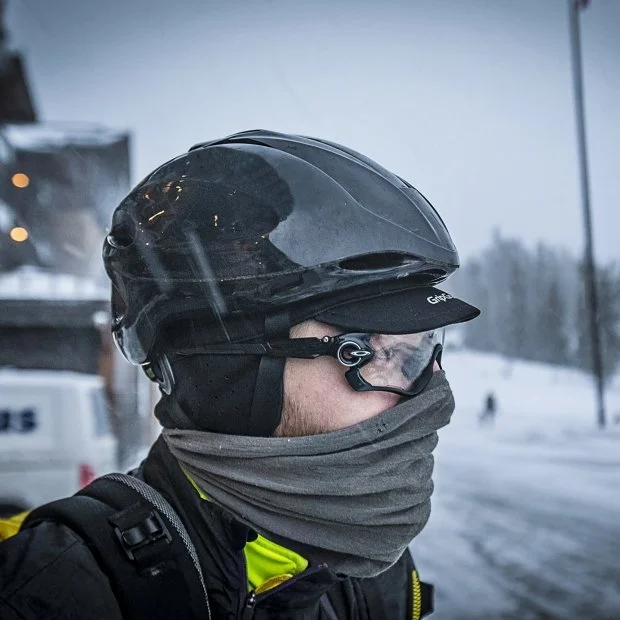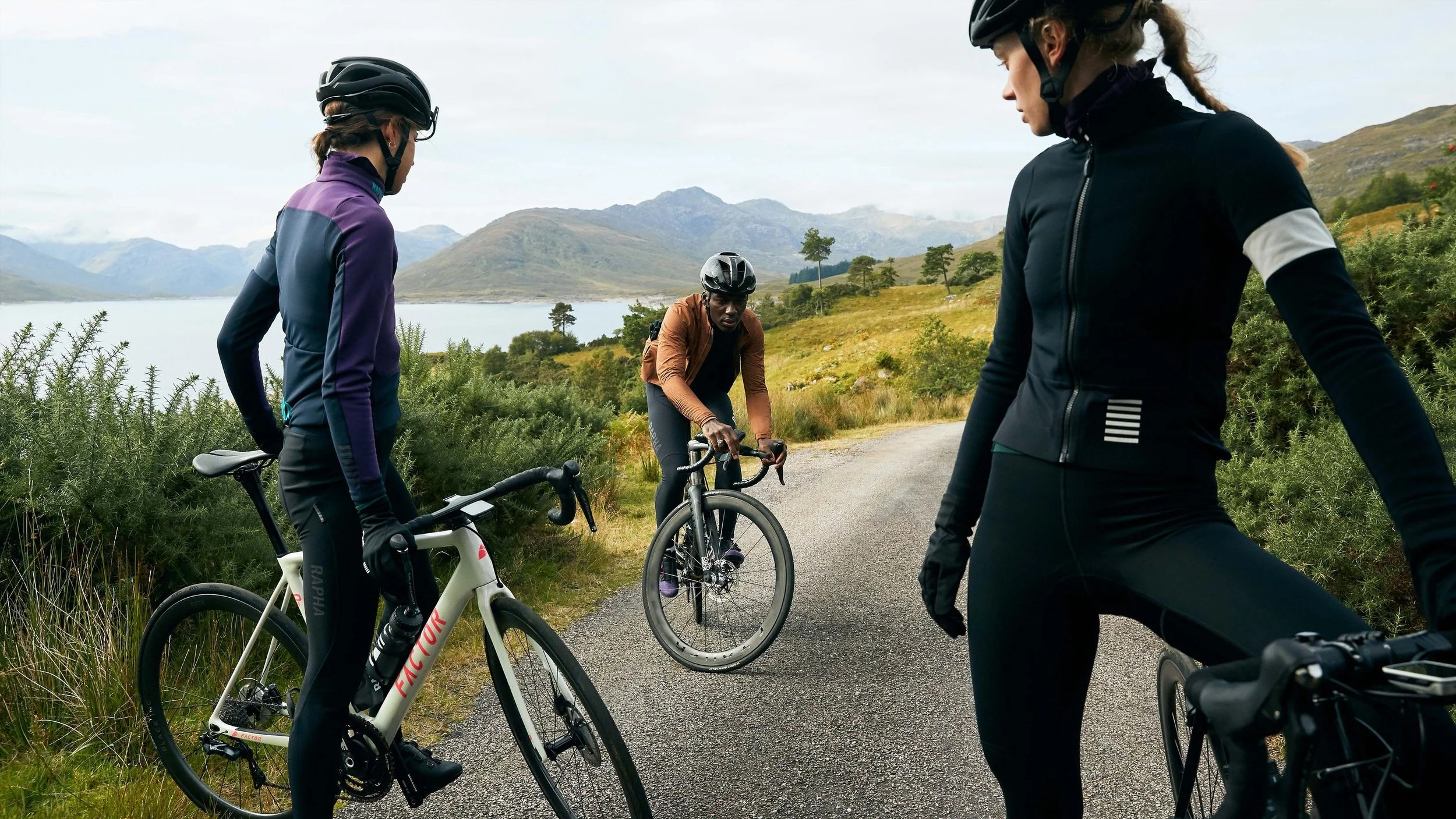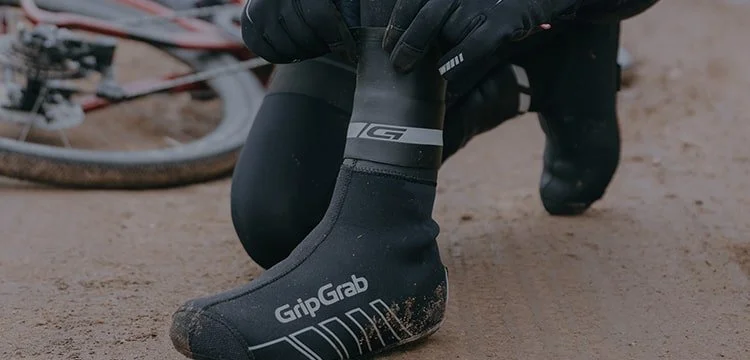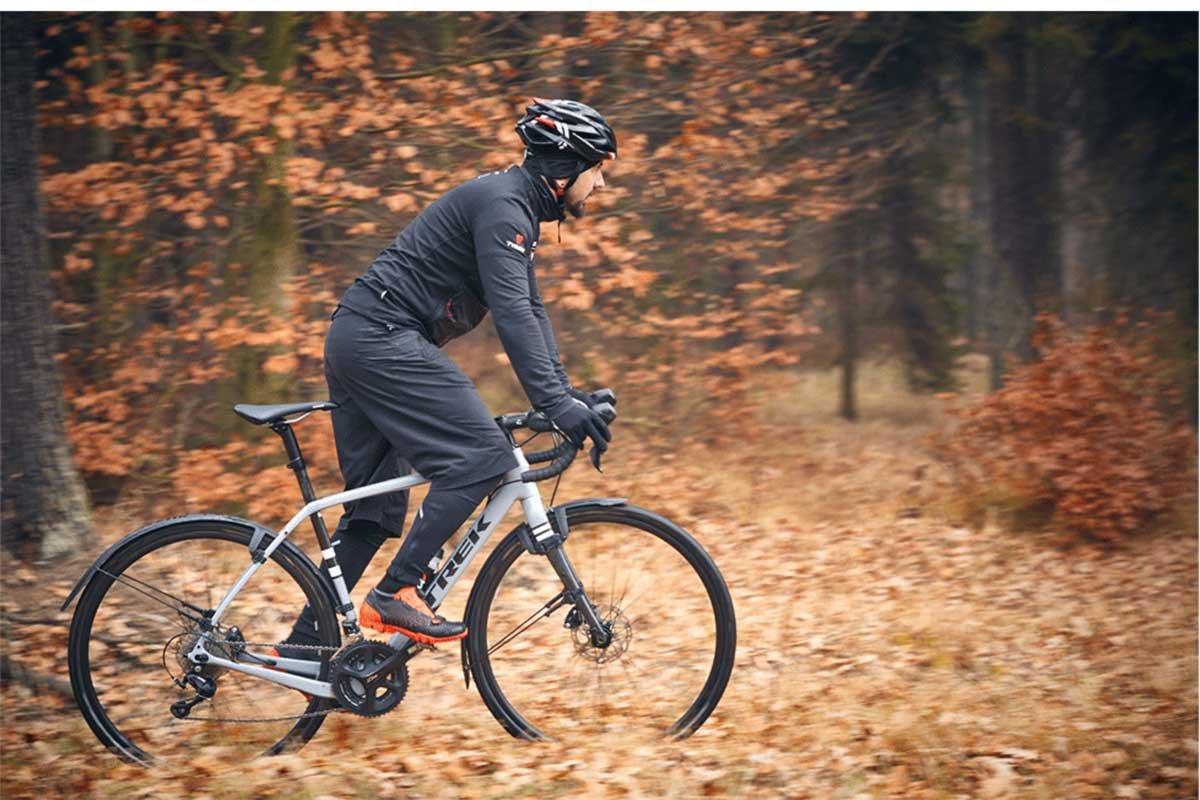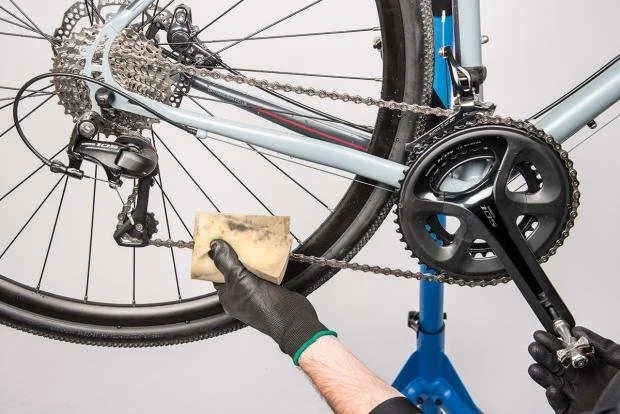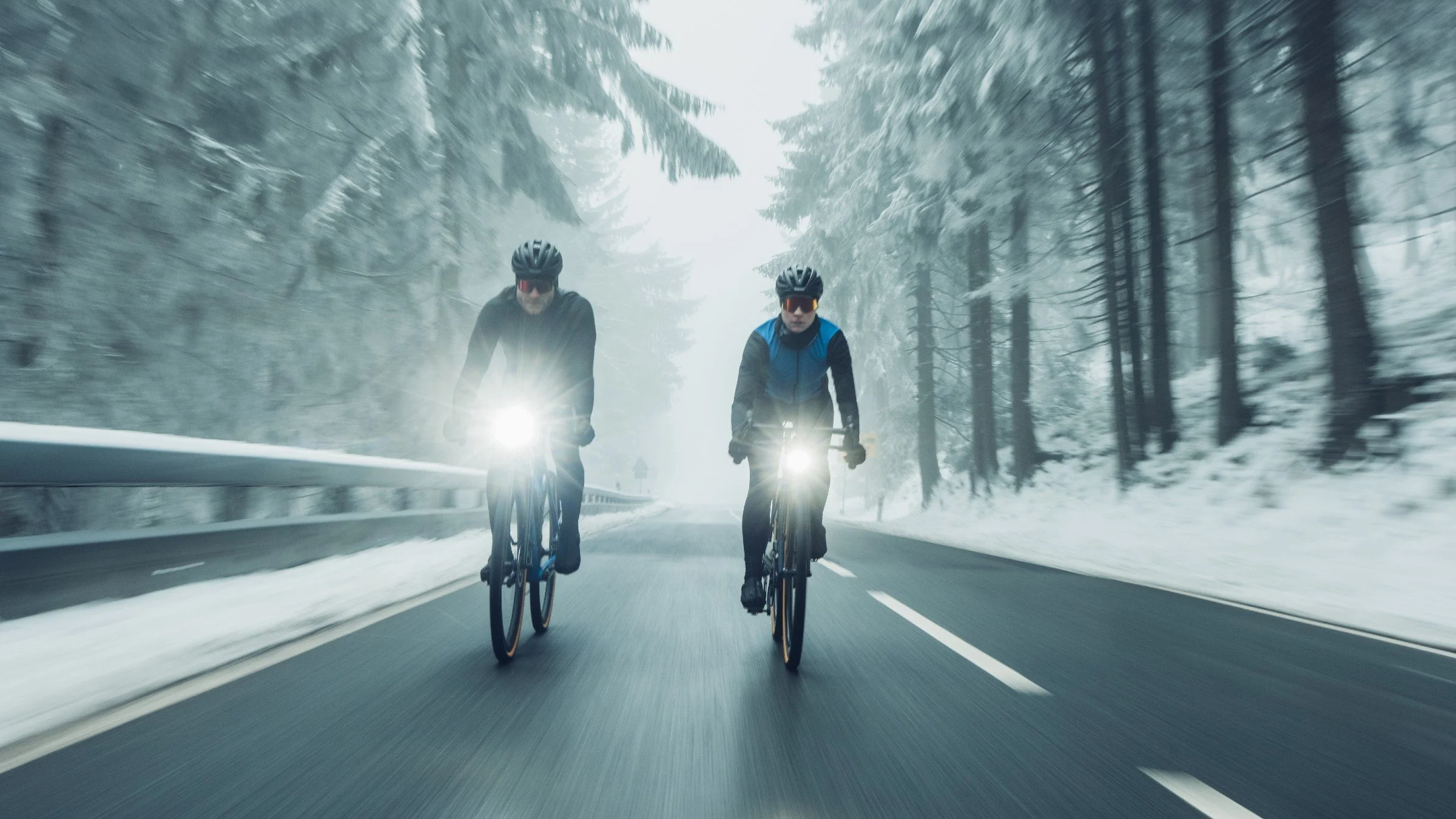Top Tips For Winter Cycling
If you're going to keep bravely riding through the colder British winter months, all cyclists can benefit from some extra protection and invest in a little more TLC for their bikes.
We might be a little bias, but there’s few better than Mike Mooney, from Hub Velo in Clapton, to help advise on some essential steps to prepare for the colder months on the roads. That’s why we’ve asked Mike to share some of his winter cycling wisdom for you all this month.
Hub Velo Committee Member: Mike Mooney
I live in Hackney, and from November to April, bike riding takes on a whole set of new challenges. Mostly cold and wet-related. I bore my family by repeatedly moaning about how cold I get and can be heard often promoting a move to the west coast of America, and explaining how there was a mistake at birth and I should’ve ended up in a tropical country!
I do love this time of year: The change in seasons. Open fires, the amazing colours on the trees, Strictly Come Dancing on the telly. But I’m a die-hard cyclist and one that feels the cold more than most.
When packing my kit bag, I start at the top of my body and work down. This means I pack my helmet first and shoes last, working my way through all my kit as I go. I'm going to use this method to explain some great tips that anyone can apply for their winter cycling.
Keeping warm up top (helmets, snoods and caps)
I’m still rocking the summer helmet. However, a cotton cap underneath makes a big difference. I wear mine backwards as the peak affects my vision.
When the temperature drops below 4 degrees then it's time for the thin wool/merino skull cap with ear covers. Thin is best as a thick cap can get too hot and fits badly under a helmet.
Popularised during the pandemic, the mighty snood is a winner keeping the neck warm and gives you an option to cover the face on super cold mornings. Make sure it’s tucked in under your jersey. For the best results, tuck under your helmet straps.
Clear glasses are a good option. The best ones are fitted with reactive lenses, as the big yellow planet can show itself sometimes (apparently).
Protecting the body
Everyone has a different body temperature and tolerance to the cold... did i mention I get really cold?! You might have heard people saying layers are best during winter (I think my nan used to) and they are absolutely right. Even in a world of super high-tech fabrics.
First layer: Merino wool is a great material. It's pricey. but worth the investment. Thin, short and long sleeve (weather dependent) base layers are both great options.
There are lots of full-length winter zip jackets on the market. You should look at something with thermal qualities and a fitted shape to avoid flapping in the wind. This will stop letting the pesky cold air in, and won’t slow you down. The Santini HVCC club jacket is great, and is made from Roubaix material combined with a Gillet, which you can lose If you get too warm.
A fully waterproof cycling jacket is a myth for me. For club rides, a windproof jacket is much lighter, easier to pack and the way to go. When you ride, you create a lot of heat, and to wrap yourself in a waterproof breathable layer can create a lot of unwanted sweat. I would only advise a waterproof jacket if you’re touring, or bike packing.
Gloves, Gloves, Gloves. You really are going to need a few pairs. I recently found out that the reason my fingers go a combination of yellow and white is having something called Raynaud's disease. Ouch! It's related to poor circulation, but it does make me an expert when it comes to advising what the best gloves to wear in winter are.
You’re going to need at least two pairs. One for early and later winter, and one for mid-winter. I recommend mitts for mid-winter.
These keep your fingers together, much warmer, and help with controls on the bike. There are many on the market that keep two fingers together. Once your fingers get cold, they are not going to get warmer. I have been in tears on several occasions.
For those who like regular fingered gloves, try neoprene material or gloves that offer windproof options to keep you warm for up to 3-4 degrees. You will need to spend a little more money, but quality gloves are really worth investing in.
The legs
You're going to need a few options. The regular short bib shorts with a leg warmer will get you through early winter and just before spring. For mid-winter when it gets really cold, try a full length bib tight with a thermal material. Ace!
I find regular shoes best, but you will want a warm set of overshoes. These amazing inventions make winter cycling possible. DO NOT LEAVE HOME WITHOUT THEM! There are lots on the market. I like the neoprene versions with extra thermal lining. Double ace!
The bike
I'm working on the assumption you have one bike. If you have the luxury of a winter bike you might already know what to do. Winter is super harsh on a bike's ability to protect against rain, mud, grit, and salty road potholes. Mudguards are really essential. Some road bikes will not fit a full mudguard, so going with clip on’s, or even a singular rear will help. Once you get a wet backside and lower back then you will be fighting the cold, and it also helps stop the muck getting ingrained in your precious bike.
Tyres
Change to a thicker tyre, keep the width 25c, but opt for something with puncture protection. Thread pattern does not need to change (this is another myth).
Mike says: “Clean your bike regularly. Every week is best.”
Cleaning
There are lots of products on the market, and hot soapy water works well too. I always recommend that you keep the drive train well oiled, but not too much, as it will become an oily mess.
There are two types of oil, wet and dry. The latter washes off in the rain. However, it does make for a much cleaner bike if you use it regularly. You will need to degrease before you apply the oil, as it can build up and dirt will be attracted to it. So:
Degrease
Rub down with rag
Apply chain lube
A good idea is to degrease your derailleurs too. After you've done this, your bike will feel much better and you will definitely go faster.
Mike says: “Don’t scrimp on lights. Get good ones.”
Lights
Final important point: Be reflective. Even during daylight hours, the winter can be dim. Have a look what your wearing before you go out. Make sure you have something on that’s reflective. A rear day light is no bad thing. In the dark, I like to wear reflective straps around my ankles. In the face of car lights, they are unmissable.
Enjoy the winter. Keep warm, and I'll be around to check that your drivetrains are clean if I see you in the Hub Velo Shop in Clapton soon.
Thanks for reading,
Mike



